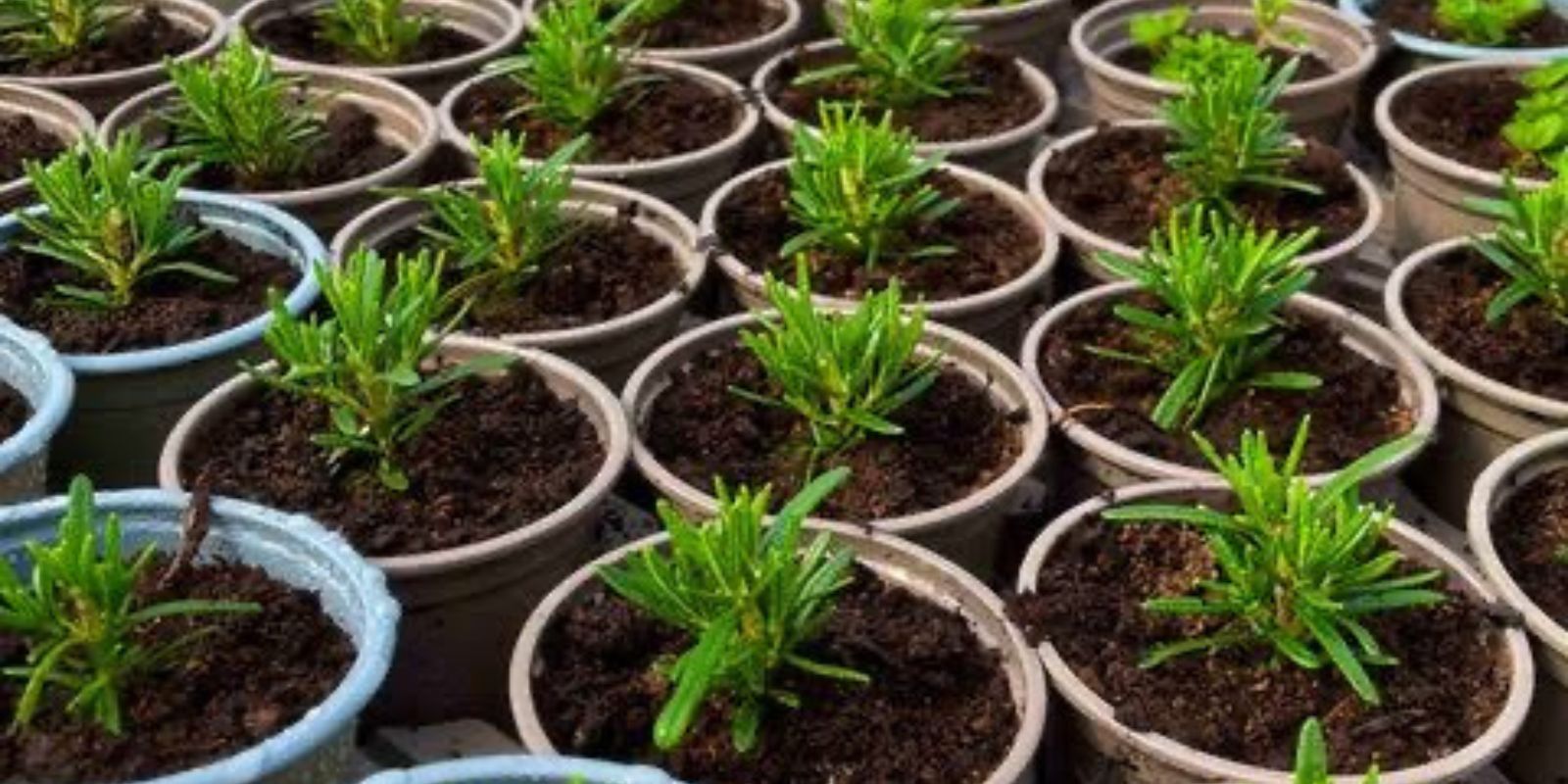Rosemary (Salvia rosmarinus) is a versatile and aromatic herb that not only adds flavor to your dishes but also beautifies your garden with its evergreen foliage. Known for its hardiness, rosemary thrives in pots, making it a favorite choice for urban gardeners and those with limited gardening space. This comprehensive guide will walk you through growing rosemary from both cuttings and seeds, as well as providing detailed care tips to ensure your plants flourish.
Why Grow Rosemary in Pots?
Growing rosemary in pots is ideal for several reasons. It allows you to control the soil quality, move the plant to optimal sunlight, and even bring it indoors during harsh weather. Whether you want to enhance your cooking or add a decorative touch to your garden, rosemary is the perfect choice for gardeners of all skill levels.
How to Grow Rosemary from Cuttings
Starting rosemary from cuttings is the quickest and most reliable method to propagate this herb. Here’s how to do it:
1. Choose the Perfect Cutting
- Select a healthy rosemary plant and look for semi-hardwood stems, which are neither too young nor too old.
- Cut a stem 4-6 inches long, just below a leaf node, using sterilized pruning shears to prevent disease.
2. Prepare the Cutting
- Remove the leaves from the bottom 2-3 inches of the cutting, as this is where roots will develop.
- Optionally, dip the cut end in rooting hormone to encourage faster root growth, though rosemary often roots well without it.
3. Plant the Cutting
- Fill a small pot with well-draining soil, such as a mix of potting soil, sand, and perlite.
- Insert the prepared cutting about 2-3 inches deep into the soil, firming it gently around the base.
4. Maintain Moisture and Humidity
- Lightly water the soil and cover the pot with a clear plastic bag or dome to retain moisture and create a mini-greenhouse effect.
- Place the pot in a warm spot with indirect sunlight.
5. Care for the Cutting
- Check the soil regularly to ensure it remains moist but not soggy.
- In about 4-6 weeks, gently tug on the cutting to test for root development. If resistance is felt, roots have formed.
6. Transplant to a Larger Pot
- Once the cutting has established roots, transfer it to a larger pot (8-12 inches in diameter) filled with fresh, well-draining soil.
How to Grow Rosemary from Seeds
Growing rosemary from seeds is a slower process but highly rewarding. Follow these steps for success:
1. Prepare Your Seed Tray
- Use a seed-starting tray or small pots filled with a well-draining seed-starting mix.
- Moisten the soil before planting.
2. Sow the Seeds
- Sprinkle rosemary seeds lightly on the surface of the soil and press them down gently.
- Cover the seeds with a thin layer of soil (1/8 inch) as they require light to germinate.
3. Create Optimal Germination Conditions
- Mist the soil with water to keep it moist but not waterlogged.
- Cover the tray or pots with plastic wrap to retain humidity and warmth.
- Place the tray in a warm area with temperatures between 21-25°C (70-77°F).
4. Wait for Germination
- Rosemary seeds are slow to germinate, taking 2-4 weeks or longer. Be patient and keep the soil moist during this period.
5. Transplant the Seedlings
- Once the seedlings have developed 2-3 pairs of true leaves, carefully transplant them into individual pots filled with potting mix.
Care Tips for Rosemary Plants
Whether you start from cuttings or seeds, proper care is essential to keep your rosemary plants healthy and thriving.
1. Sunlight Requirements
- Rosemary loves sunlight and requires 6-8 hours of direct sunlight daily.
- If growing indoors, place the pot near a south-facing window or use grow lights to supplement natural light.
2. Watering
- Allow the top inch of soil to dry out between waterings to avoid overwatering, which can lead to root rot.
- Use a pot with drainage holes to prevent waterlogging.
3. Pruning for Bushier Growth
- Regular pruning encourages bushier growth and prevents the plant from becoming leggy.
- Harvest sprigs as needed, but avoid cutting more than one-third of the plant at a time.
4. Soil and Fertilization
- Use well-draining soil, such as a mix of potting soil, sand, and perlite.
- Feed the plant with a balanced, water-soluble fertilizer every 4-6 weeks during the growing season.
5. Temperature and Humidity
- Rosemary thrives in temperatures between 20-30°C (68-86°F).
- While it prefers moderate humidity, it can tolerate drier conditions, making it an excellent choice for Mediterranean climates.
6. Pest and Disease Management
- Common pests include spider mites, aphids, and whiteflies. Treat infestations with neem oil or insecticidal soap.
- Prevent fungal diseases by ensuring good air circulation around the plant and avoiding overwatering.
Additional Tips for Success
- Winter Care: If you live in a region with freezing winters, bring your rosemary indoors before the first frost. Reduce watering and place it in a cool, sunny location.
- Companion Planting: Rosemary pairs well with other Mediterranean herbs like thyme, sage, and oregano.
- Decorative Uses: Rosemary’s evergreen appearance makes it a beautiful addition to patios, balconies, or kitchen windowsills.
The Benefits of Growing Rosemary
Aside from its culinary uses, rosemary offers several benefits:
- Acts as a natural air freshener with its aromatic leaves.
- Attracts pollinators like bees and butterflies to your garden.
- Can be used in herbal remedies, teas, and DIY beauty products.
Conclusion
Growing rosemary in pots is a rewarding endeavor that brings a touch of nature to your home while offering fresh herbs for your kitchen. Whether you start from a cutting or seeds, the process is simple and highly enjoyable. By providing the right care, your rosemary plant will thrive and become a fragrant, evergreen companion in your gardening journey.
Have you tried growing rosemary at home? Share your experiences and tips in the comments below!

